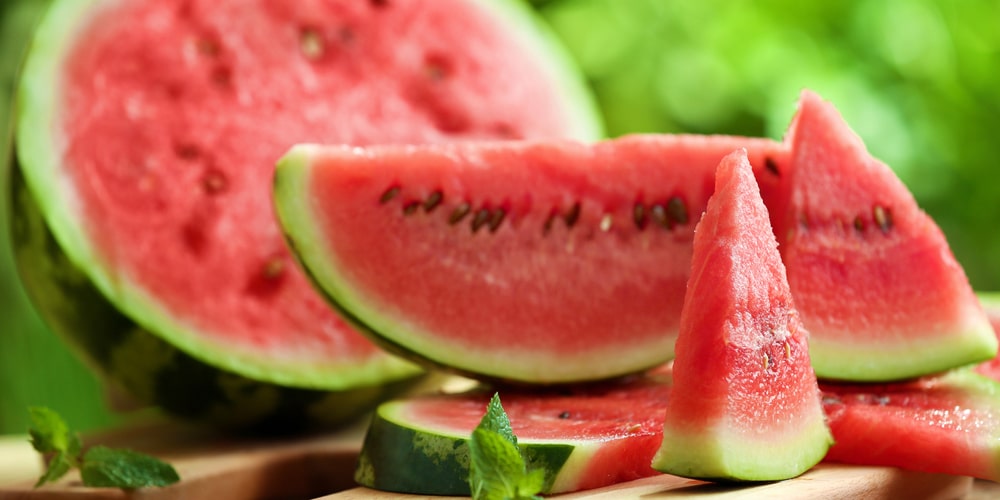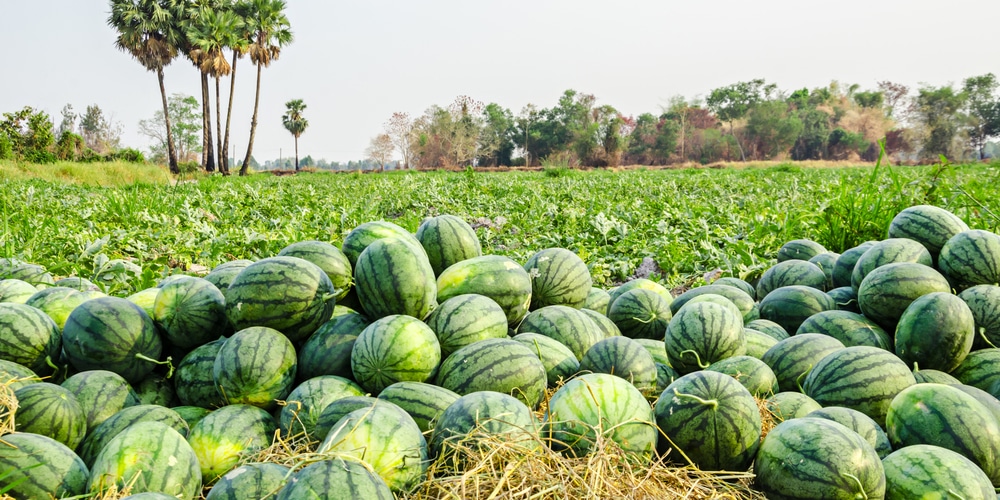Watermelon (Citrullus lanatus) is a flowering plant that can grow even in USDA zone 4. Of course, selecting cold-hardy cultivars is necessary to achieve a successful crop. And in Oregon, this annual also has to deal with drought and pollinator issues. When to plant watermelon in Oregon?
The best time to sow watermelon in Oregon is between mid-April and early May. For clarity, soil temperature must reach 60F at a 2-inch depth to allow watermelon seed germination.
East of the Cascades, it is common practice to wait until June or even July for sowing it. But such a delay would be detrimental to crop size.
When To Plant Watermelon In Oregon But More Specifically In The Columbia Basin
Pollinator insects tend to come out in late winter and early spring. And since they are necessary for growing watermelon plants in the Columbia Basin, it is better to have flowering plants that fill the gaps throughout the year.
And sowing your watermelon seeds around April 10 is usually the best option to shorten the springtime gap—watermelon plants start blooming in June.
Underwatering your watermelons during the summer heatwaves is surely possible. This is why you should not wait past May 5 to sow the seeds if the soil temperature is right.
Planting in early May will reduce the risk of underwatering your watermelons at the beginning of their vegetative stage, which would cause them to get off to a slow start.
Cultivating watermelons in the fall may lead to less savory fruits and overwatering issues. Yet, it could prove otherwise if we consider the latest climate change effects.
When it comes to watermelon, July 5 is the ideal date to start your fall planting. You will only have to watch out for the dryest days that come with the transition from July to August. But then you should have no irrigation problem afterward.
Before You Plant Your Watermelons In The East Of The Cascades
The weather is usually grey and drizzly during the winter months, averaging 150 days of rain. But eastern Oregon gets a lot of sunshine in the spring. So, it makes sense to start your crop as soon as possible.
But before you do that, about ten days ahead, incorporate organic fertilizer into the soil to let it break down. In this way, the nutrients will be available to the plant.
If you start indoors, use a 20-20-20 fertilizer after you transplant your watermelon plants to give them a boost. Also, do some soil tests for the best results. Sulfur and boron are vital micronutrients this crop will need but may be lacking due to intensive farming.
A good pollination plant is imperative for growing delicious watermelon. Without pollinators, you would have to pollinate the flowers by hand.
And that is no fun job. So, set up a bee house and provide a pollinator-friendly habitat if you do not have enough pollinators in the area.
5 Tips For Growing Watermelons In Oregon
Do not let any watermelon plant bear more than three fruits. Because of the heat and drought, you have better reduce the number of watermelons per plant. Otherwise, the vine will not have the energy to make tasty fruits. If you chose a small variety, cut the total number to four.
Honeybees are not an endangered species. On the contrary, the wild bees—the non-honey-making kind—are at risk of extinction. And these bees are the most important pollinators. So having a wide range of different flowering plants is necessary to sustain the pollinator population in your area.
If you grow your watermelon in the ground, start on fallow land. Why? Mainly because of a couple of reasons: disease control and root-knot nematodes.
Install drip irrigation because watermelons have a shallow root system, and it can get hard to get water down to those roots in the summer heat with all the sprawling vines sunbathing on the ground. On top of that, the vines do not like moisture, and unwanted water will only promote plant diseases.
When to Plant Watermelon in Oregon?: Conclusion
Watermelons want a long growing season with a high amount of sun. They prefer temperatures above 70F and do not mind getting a little toasty.
But if you incorrectly fertilize them during this time lapse, no flowers will appear. In detail, avoid adding nitrogen after the initial growth stage.
Related Article: Average Watermelon Weight

